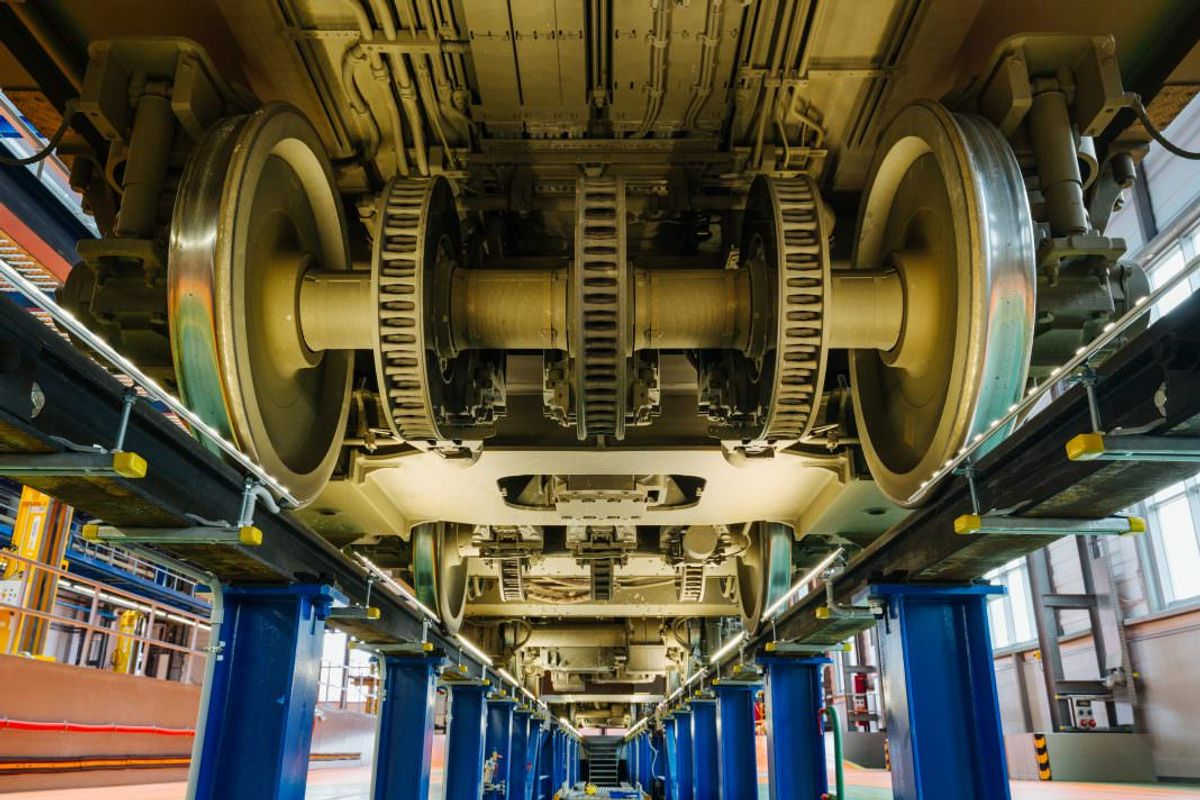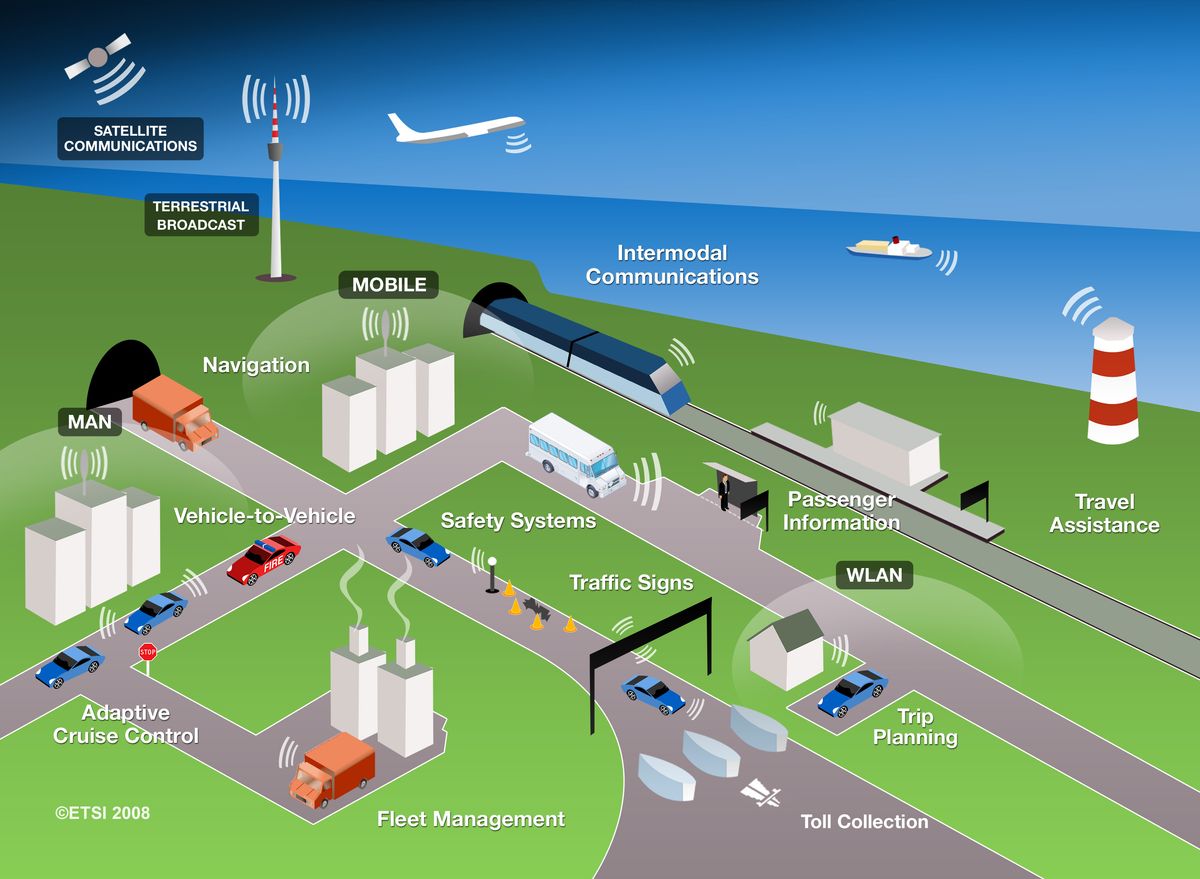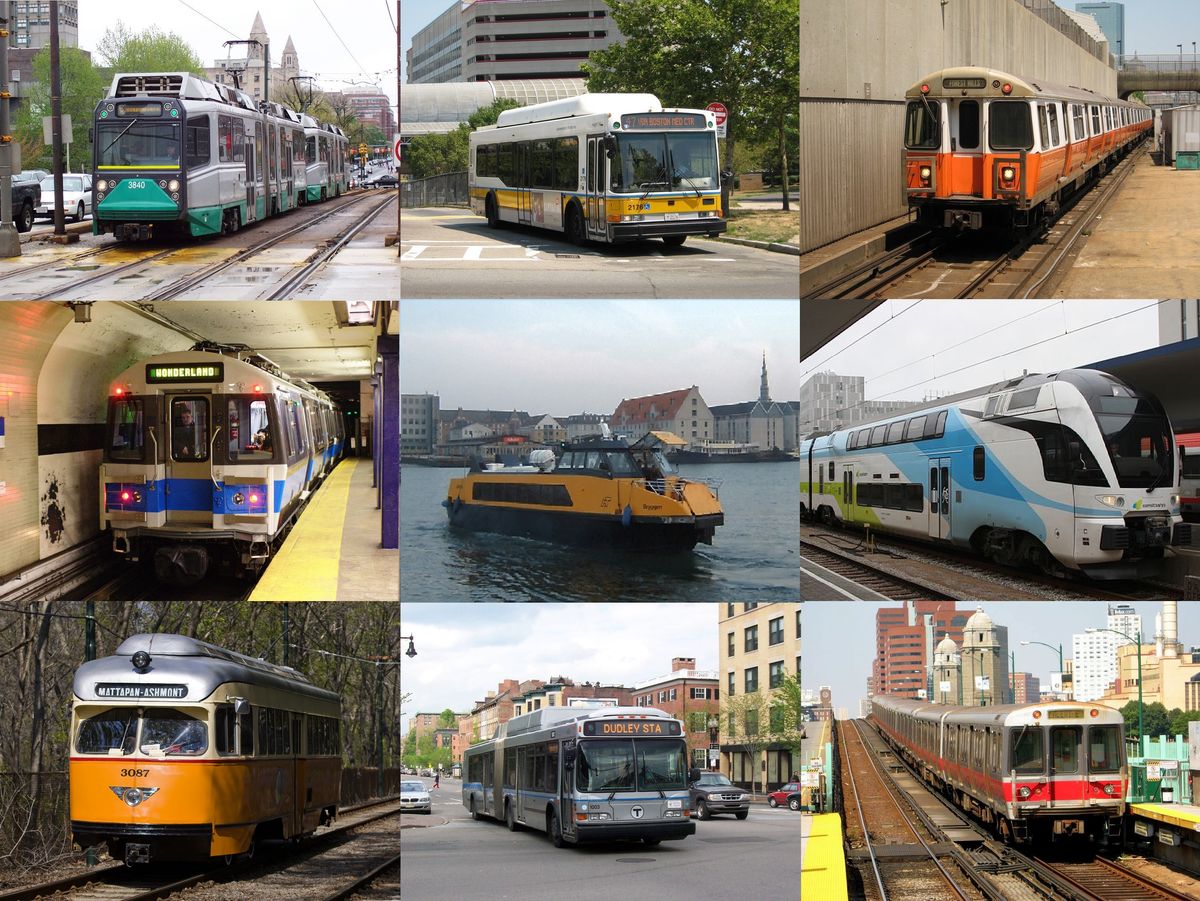Public transportation stands as a critical infrastructure for urban mobility, directly impacting economic growth, environmental sustainability, and social inclusion. The integration of Artificial Intelligence (AI) into public transit systems promises to revolutionize the industry by enhancing safety, improving efficiency, and providing more reliable services. This article delves into the multifaceted role of AI in public transportation, exploring how it can lead to smarter maintenance practices, optimize route planning, ensure passenger safety, streamline fare collection, and foster accessibility and inclusivity.
Key Takeaways
- AI enables predictive maintenance in public transit, preventing failures, extending asset lifespans, and showcasing success through various case studies.
- Optimized route planning and traffic management through AI lead to dynamic adjustments, reduced congestion, and enhanced passenger experiences.
- AI surveillance systems in public transportation enhance passenger safety by enabling real-time monitoring, incident detection, and crime prevention.
- Innovative AI-powered fare collection and revenue management systems contribute to automated transactions, fraud prevention, and dynamic pricing strategies.
- AI technologies improve accessibility and inclusivity, providing assistance for passengers with disabilities and personalized travel services for all.
Leveraging AI for Predictive Maintenance in Public Transit

Predicting Failures Before They Occur
The advent of AI in public transportation has ushered in a new era of operational efficiency, particularly in the realm of maintenance. Predictive maintenance leverages machine learning algorithms to analyze vast amounts of data from transit systems, enabling operators to anticipate and address potential issues before they lead to service disruptions.
By identifying patterns and anomalies in equipment behavior, AI systems can forecast when parts are likely to fail and suggest preemptive maintenance actions.
This proactive approach not only minimizes downtime but also contributes to a safer travel environment for passengers. For instance, a transit authority might use AI to monitor the health of rail track systems, signaling equipment, or vehicles, and receive alerts about any irregularities that could indicate an impending failure.
- Early detection of wear and tear
- Scheduling maintenance during off-peak hours
- Reducing the likelihood of costly emergency repairs
- Enhancing the reliability of the transit service
Extending the Lifespan of Transit Assets
The integration of AI into public transportation systems has revolutionized the way transit assets are managed. By predicting when maintenance is needed, AI enables transit authorities to proactively address issues before they lead to breakdowns. This not only prevents service disruptions but also contributes significantly to the longevity of vehicles and infrastructure.
The use of AI for predictive maintenance is a game-changer for public transportation, as it allows for more precise and efficient allocation of resources.
Moreover, the data-driven insights provided by AI systems help in optimizing the replacement cycles and refurbishment plans. This ensures that each component is serviced at the ideal time, avoiding both premature maintenance and overdue wear and tear. The following table illustrates the impact of AI on maintenance scheduling and asset lifespan:
This proactive approach minimizes downtime, ensures a higher level of service reliability, and extends the lifespan of transit assets.
Case Studies: Success Stories in Predictive Maintenance
The integration of AI in predictive maintenance has led to remarkable success stories across various public transportation networks. One such example is the Skyline Rail Project for HART, which has significantly transformed public transportation. The project's predictive maintenance strategies have been pivotal in ensuring the reliability and efficiency of the service.
- Skyline Rail Project for HART: This initiative has been a game-changer in the realm of public transit. Participants in the project have been enthusiastic about the potential of a future transportation network that is capable of moving thousands of people efficiently to their destinations, including work and shopping areas.
By harnessing the power of AI for predictive maintenance, public transportation can achieve new heights in operational efficiency and passenger satisfaction.
The success of such projects not only showcases the potential of AI in enhancing the longevity and reliability of transit assets but also serves as a beacon for future developments in the sector.
Optimizing Route Planning and Traffic Management

Dynamic Route Adjustments Using Real-Time Data
The advent of AI in public transportation has brought about a transformative change in how transit systems operate. Dynamic routing is at the forefront of this revolution, enabling buses and trains to adjust their paths in response to the ever-changing urban landscape. By analyzing real-time data on traffic conditions, construction, and passenger demand, AI algorithms can suggest alternative routes that minimize delays and improve overall service reliability.
- Traffic conditions: AI evaluates congestion levels to avoid bottlenecks.
- Construction updates: AI incorporates the latest information to reroute around disruptions.
- Passenger demand: AI predicts high-demand areas to optimize route coverage.
The ability to adapt to real-time circumstances not only enhances the efficiency of public transit but also significantly contributes to passenger satisfaction. By reducing unexpected wait times and travel durations, commuters can rely on a more consistent and punctual service.
Reducing Congestion and Improving Passenger Experience
The integration of AI-powered solutions in public transportation is revolutionizing how cities manage traffic flow and enhance the travel experience for commuters. By analyzing vast amounts of data, AI algorithms can predict peak travel times and suggest optimal distribution of transit resources to alleviate congestion.
- Dynamic rerouting of buses during unexpected traffic jams
- Adjusting train schedules in real-time to match demand
- Smart traffic signals that adapt to changing traffic conditions
AI-driven systems enable a more responsive and efficient public transit network, directly contributing to reduced wait times and a smoother journey for passengers.
The benefits of these AI applications are not just theoretical; they are evident in the improved punctuality of services and the positive feedback from transit users. By prioritizing investments in public transit and alternative mobility solutions, cities can pave the way for a more sustainable and accessible transportation ecosystem.
Integrating Multimodal Transportation Systems
The advent of Smart Cities has ushered in a new era of transportation, where the integration of various modes into a seamless journey is paramount. Multimodal transportation systems leverage AI to synchronize schedules, optimize connections, and provide real-time updates to commuters, ensuring a smooth and efficient travel experience.
- Multimodal Ticketing: One ticket for all modes of transport.
- Real-Time Scheduling: AI algorithms adjust transit schedules on the fly.
- Unified Information Platforms: Centralized sources for travel information.
By integrating multimodal transportation systems, cities are able to offer a more dynamic and responsive transit service, adapting to the needs of the community and the individual traveler.
The concept of Mobility as a Service (MaaS) is at the forefront of this transformation. MaaS models are set to play a fundamental role in integrating these different transport services into a single and unified platform where travelers can plan and manage their journeys with ease.
Enhancing Passenger Safety with AI Surveillance

Real-Time Monitoring and Incident Detection
The advent of AI-driven real-time incident detection systems marks a significant leap forward in ensuring the safety of public transportation. These systems are designed to monitor transit environments continuously, using advanced algorithms to identify potential safety threats or operational issues as they arise.
- Immediate identification of accidents or hazardous situations
- Rapid response coordination with emergency services
- Continuous surveillance to maintain high safety standards
By leveraging big data and AI-based analytics, transit authorities can preemptively address incidents, minimizing disruptions and enhancing passenger confidence.
The integration of these technologies into intelligent transportation systems is not just about reacting to incidents but also about creating a proactive safety culture. Transit agencies that adopt such frameworks are better equipped to manage the complexities of modern urban transit networks.
AI in Crime Prevention and Response Coordination
The integration of AI in crime prevention has revolutionized the way public transportation systems address safety concerns. By analyzing patterns and anomalies in data, AI systems can proactively identify potential security threats, enabling a swift and coordinated response.
- Real-time surveillance through AI-powered CCTV cameras can detect unusual behaviors or unattended items, triggering alerts for immediate investigation.
- Advanced algorithms assist in predicting crime hotspots, allowing transit authorities to allocate resources more effectively.
- AI enhances communication between transit operators and law enforcement, ensuring rapid response times in emergencies.
The potential of AI to transform public safety in transportation is immense. With the ability to reduce crime rates and improve emergency response, AI stands as a critical tool in modern public transit systems.
A McKinsey Global Institute study highlights the significant impact of smart technologies like AI on urban safety, suggesting a potential reduction in crime rates by up to 40% and notably faster emergency service response times.
Balancing Safety and Privacy: Ethical Considerations
In the realm of public transportation, the deployment of AI surveillance systems must strike a delicate balance between enhancing safety and respecting individual privacy. The ethical deployment of AI requires clear guidelines and transparency to maintain public trust.
- Establish clear policies for data collection and use
- Ensure accountability and oversight mechanisms
- Provide transparency to passengers about surveillance practices
- Regularly review and update privacy protection measures
The integration of AI surveillance in public transit systems necessitates a robust framework that protects passengers' privacy while ensuring their safety. This involves not only the application of advanced technologies but also the adherence to ethical standards and legal requirements.
It is imperative that transit authorities and policymakers collaborate to create regulations that define the acceptable use of AI surveillance data. This collaboration should also extend to the development of systems that can anonymize data, thereby safeguarding individual identities without compromising the effectiveness of safety measures.
AI-Powered Fare Collection and Revenue Management

Automated Fare Collection Systems
The advent of Automated Fare Collection (AFC) systems has revolutionized the way public transit agencies manage and collect fares. These systems not only streamline the fare collection process but also enhance the overall efficiency of public transportation networks. By automating fare collection, transit agencies can reduce operational costs, minimize fare evasion, and improve the speed of passenger throughput at entry and exit points.
AFC systems typically involve a combination of hardware and software components, including ticket vending machines, validation terminals, and backend accounting systems. Passengers benefit from the convenience of multiple payment options, such as contactless cards, mobile payments, and smart devices, which contribute to a seamless travel experience.
The integration of AFC systems is a strategic move towards modernizing public transit and aligning it with the digital economy. It is a critical step in ensuring that public transportation remains a competitive option in the era of rapid technological advancements.
The market for AFC systems is on a significant growth trajectory. A recent report highlights that the Automated Fare Collection System Market is projected to reach USD 27 Billion by 2030, growing at a CAGR of 12.86% during the forecast period of 2023-2030. This growth is indicative of the increasing adoption of AFC systems across the globe as cities seek to upgrade their public transportation infrastructure.
Fraud Detection and Prevention Strategies
The integration of Artificial Intelligence (AI) in public transportation fare collection has revolutionized the way transit agencies tackle fraud. AI systems are designed to identify patterns and anomalies that may indicate fraudulent activity, allowing for rapid response and mitigation.
- Real-time transaction analysis to spot irregularities
- Pattern recognition to identify consistent fraud schemes
- Data mining to uncover hidden fraud
- Risk assessment to prioritize alerts
These strategies not only prevent revenue loss but also maintain the integrity of the fare collection system. AI's ability to learn and adapt over time ensures that even the most sophisticated fraud attempts are not beyond detection.
By continuously analyzing vast amounts of transaction data, AI provides a robust defense against fare evasion and fraudulent activities, safeguarding public transportation revenues.
The implementation of AI in fraud detection is a testament to its growing role in ensuring the efficiency and security of public transit systems.
Maximizing Revenue with Dynamic Pricing Models
The implementation of dynamic pricing models in public transportation is a strategic approach to maximizing revenue. By adjusting fares based on demand, time of day, and other factors, transit authorities can optimize earnings while maintaining affordability for passengers.
- Demand-based fare adjustments ensure prices reflect the value of the service at peak times.
- Time-based pricing can encourage off-peak travel, balancing the load on transit systems.
- Event-driven pricing takes into account special occasions that may affect transit usage.
Dynamic pricing models require careful calibration to avoid pricing out certain groups of passengers while ensuring operational sustainability.
The integration of AI into fare management systems allows for the analysis of vast amounts of data to determine the most effective pricing strategies. This not only benefits the transit authorities in terms of revenue but also enhances the overall efficiency of the public transportation system.
Improving Accessibility and Inclusivity in Public Transportation

AI for Assisting Passengers with Disabilities
Artificial Intelligence (AI) is revolutionizing the way public transportation systems cater to passengers with disabilities. AI-driven solutions are enhancing accessibility, making travel more convenient and independent for those requiring additional support. These technologies include voice-activated systems, real-time navigation aids, and automated service requests.
- Voice-activated systems allow for hands-free operation of various transit features, such as ticket purchasing or emergency communications.
- Real-time navigation aids provide audio and visual guidance through stations and on vehicles, helping to orient passengers with visual or cognitive impairments.
- Automated service requests enable passengers to easily seek assistance or report issues without the need for complex interactions.
By integrating AI into public transit, we are not only improving the user experience for passengers with disabilities but also setting a new standard for inclusive transportation.
The implementation of these AI tools is a step towards a more inclusive public transit system where all passengers, regardless of their abilities, can navigate with greater ease and confidence.
Personalized Travel Assistance and Information Services
In the realm of public transportation, personalized travel assistance and information services are revolutionizing the passenger experience. By harnessing AI, these services provide tailored information to commuters, enhancing their journey from start to finish. For instance, AI can suggest the most efficient routes based on a user's travel history, current traffic conditions, and personal preferences.
- Real-time updates on transit schedules and delays
- Personalized journey planning and navigation
- Alerts for upcoming stops or transfers
With the integration of AI, passengers can now enjoy a more seamless and stress-free travel experience, as the system learns and adapts to their individual needs over time.
Moreover, these AI-driven systems can assist in language translation, making public transit more accessible to tourists and non-native speakers. The benefits of AI in transportation are not just limited to convenience but also extend to operational efficiency and resource optimization.
Designing Inclusive Transit Systems with AI Insights
The integration of AI insights into the design of public transportation systems marks a significant step towards inclusivity. By analyzing vast amounts of data, AI can identify patterns and preferences among diverse user groups, leading to more accessible and user-friendly transit solutions. AI-driven analytics can optimize the layout and features of transit hubs to better serve passengers with disabilities and those with specific needs.
- AI identifies areas needing improvement by analyzing feedback and usage data.
- It suggests design modifications for better accessibility.
- AI simulates the impact of proposed changes to ensure effectiveness.
With the power of AI, transit systems can evolve into more equitable spaces that cater to the needs of all individuals, regardless of their physical abilities or socio-economic status.
The application of Generative AI in transportation is not only revolutionizing vehicle design but also enhancing the ability to predict and mitigate real-time congestion. This proactive approach ensures that transit systems are not only inclusive but also efficient and responsive to the dynamic demands of urban mobility.
Conclusion
In conclusion, the integration of Artificial Intelligence (AI) into public transportation systems heralds a transformative era for urban mobility. By leveraging AI's capabilities, we can significantly enhance the safety and efficiency of public transit, thereby improving the overall experience for passengers. From predictive maintenance and real-time traffic management to personalized travel assistance and advanced security measures, AI technologies promise to streamline operations and foster a more reliable and user-friendly transportation network. As we continue to innovate and implement these intelligent systems, it is crucial to address the ethical and privacy concerns that accompany such advancements, ensuring that the benefits of AI in public transportation are equitably accessible to all members of society.
Frequently Asked Questions
How does AI contribute to predictive maintenance in public transportation?
AI analyzes data from various sensors and systems to predict potential failures before they occur, allowing transit authorities to perform maintenance proactively and avoid service disruptions.
Can AI improve the efficiency of route planning in public transit?
Yes, AI can process real-time data to optimize routes, reduce congestion, and enhance the overall passenger experience by suggesting dynamic route adjustments.
In what ways does AI enhance passenger safety in public transportation?
AI surveillance systems can monitor for unusual activities, detect incidents in real-time, and assist in crime prevention by coordinating response efforts swiftly and effectively.
How does automated fare collection work in AI-powered public transit systems?
Automated fare collection uses AI to streamline the ticketing process, detect fare evasion, and implement dynamic pricing models to maximize revenue and improve service affordability.
What role does AI play in making public transportation more accessible and inclusive?
AI assists passengers with disabilities by providing personalized travel assistance, offering information services, and helping design transit systems that cater to a diverse range of needs.
Are there ethical concerns related to the use of AI surveillance in public transportation?
Yes, while AI surveillance can enhance safety, it raises privacy and ethical considerations that need to be addressed to ensure the rights and trust of passengers are maintained.



